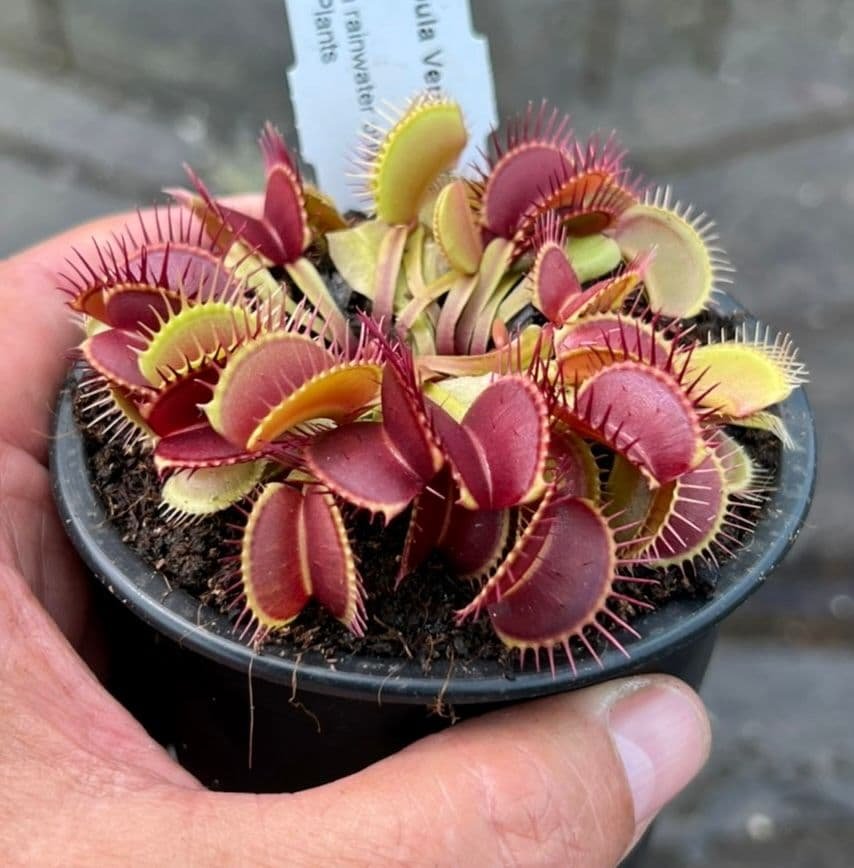The Dionaea fly trap, more popularly known as the Venus flytrap, has long fascinated plant lovers and scientists alike. This carnivorous plant is native to subtropical wetlands of the East Coast of the United States, particularly North and South Carolina. Its unique mechanism for capturing prey makes it a marvel of the plant kingdom.
Understanding the Dionaea Fly Trap Mechanism
Unlike typical plants that passively photosynthesize, the Dionaea fly trap actively lures, traps, and digests its prey. Its modified leaves are shaped like jaws, with hair-like structures called trigger hairs. When an unsuspecting insect touches these hairs twice within 20 seconds, the trap snaps shut.
This rapid movement, uncommon in the plant world, is a result of specialized cells that can rapidly change their internal pressure. Once closed, the trap secretes digestive enzymes to break down the prey. Within 5 to 12 days, the plant absorbs the nutrients, and the trap reopens, ready for another victim.
Ideal Growing Conditions for a Dionaea Fly Trap
Growing a Dionaea fly trap requires specific conditions to mimic its natural habitat. First and foremost, the soil must remain moist but not soggy. A mix of sphagnum peat moss and perlite works well. Regular potting soil should be avoided as it contains minerals that can damage the plant.
Secondly, the Dionaea fly trap thrives in bright, direct sunlight. At least 4-6 hours of sunlight per day is recommended. Alternatively, fluorescent or LED grow lights may supplement natural light during overcast seasons or indoor growth.
Moreover, distilled or rainwater must be used for watering. Tap water often contains chlorine and minerals harmful to the plant. Temperature control is also crucial. These plants prefer temperatures between 70°F to 95°F in the growing season and need a dormancy period in winter around 40°F to 55°F.
Feeding and Maintenance Tips
Though it is tempting to feed the plant regularly, the Dionaea fly trap should only consume one insect every couple of weeks. In nature, it catches its own food. However, if kept indoors, feeding may be necessary. Small live insects such as flies, ants, or spiders work best. It is essential not to feed it human food or processed items, which can rot inside the trap.
Importantly, overfeeding can exhaust the plant. Each trap can only close a limited number of times before it dies off. Therefore, feeding sparingly ensures long-term health. Additionally, pruning dead traps helps the plant conserve energy and maintain a neat appearance.
The Role of Dormancy in Growth Cycle
An often-overlooked aspect of Dionaea care is its winter dormancy. During late autumn to early spring, the plant naturally enters a rest period. Traps may blacken and die, but this is normal. Growth slows, and the plant conserves energy for spring revival.
To support dormancy, reduce watering and maintain lower temperatures. Artificial light can be minimized as well. Skipping this phase may result in a weakened plant that struggles to survive the following season.
Common Challenges and How to Avoid Them
Although hardy, Dionaea fly traps face challenges. Overwatering remains a leading cause of root rot. Ensuring proper drainage and using the right soil mix can prevent this issue. Likewise, insufficient lighting causes weak growth and fewer traps.
Pests like aphids or spider mites occasionally appear. In such cases, a gentle rinse or neem oil application can control infestations. Also, avoid triggering traps for fun. Each closure uses the plant’s energy, and unnecessary stimulation shortens its lifespan.
Why Choose a Dionaea Fly Trap for Your Home?
The Dionaea fly trap is not just a fascinating organism; it’s also an effective natural insect controller. Unlike chemical pesticides, it poses no harm to pets or children. Additionally, its dramatic trap action is an engaging spectacle, offering a touch of exoticism and science to any indoor or outdoor space.
Furthermore, cultivating this plant teaches patience, discipline, and appreciation for nature’s delicate balance. Whether you’re a botany enthusiast or just curious about carnivorous plants, the Dionaea is a captivating addition to your collection.
Conclusion
The dionaea fly trap is more than just a plant—it is a living example of evolutionary brilliance. With the right care and environment, it can thrive while providing natural pest control and endless fascination. From its intricate trapping mechanism to its seasonal dormancy, the Dionaea fly trap is a reminder of the wonders hidden in nature.



